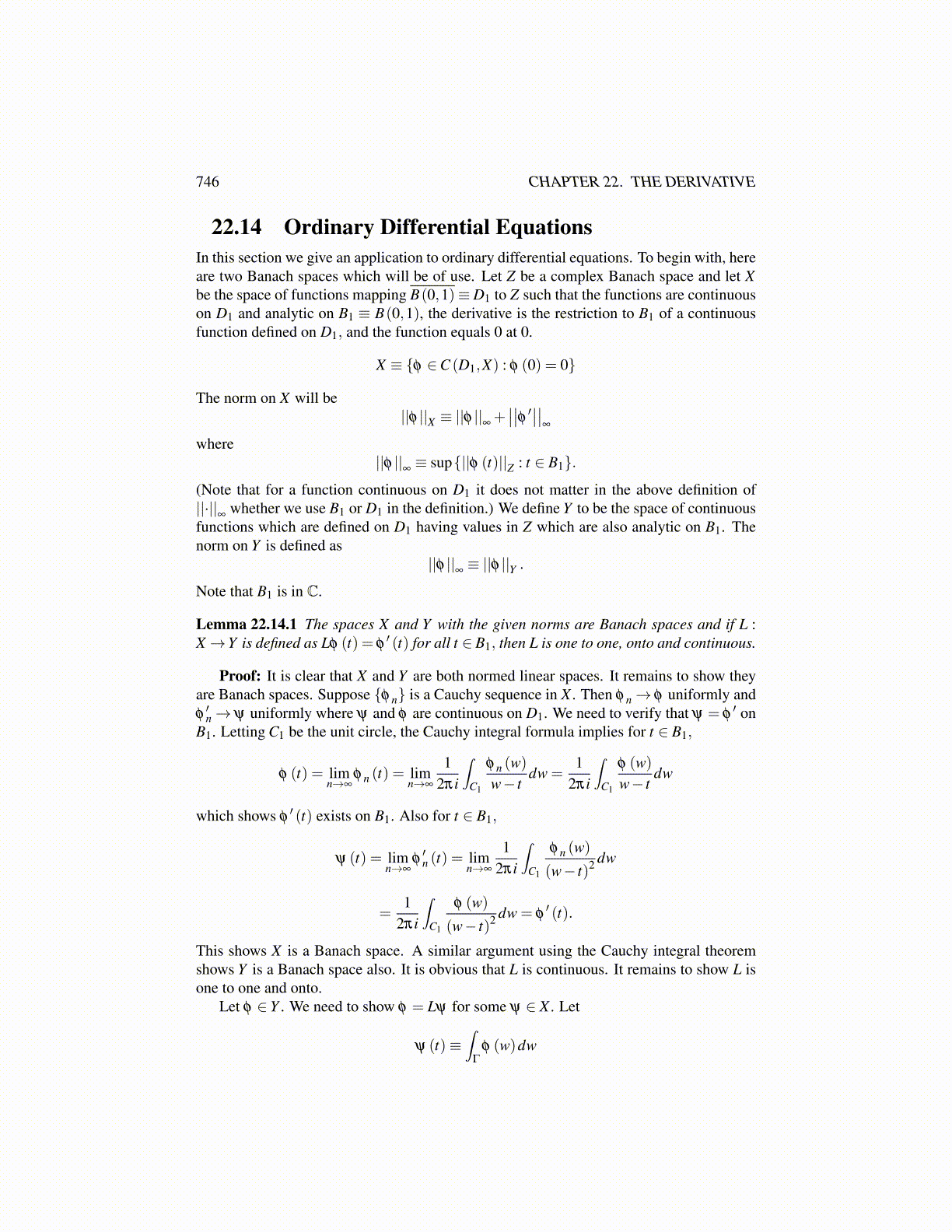
746 CHAPTER 22. THE DERIVATIVE
22.14 Ordinary Differential EquationsIn this section we give an application to ordinary differential equations. To begin with, hereare two Banach spaces which will be of use. Let Z be a complex Banach space and let Xbe the space of functions mapping B(0,1)≡D1 to Z such that the functions are continuouson D1 and analytic on B1 ≡ B(0,1), the derivative is the restriction to B1 of a continuousfunction defined on D1, and the function equals 0 at 0.
X ≡ {φ ∈C (D1,X) : φ (0) = 0}
The norm on X will be||φ ||X ≡ ||φ ||∞ +
∣∣∣∣φ ′∣∣∣∣∞
where||φ ||
∞≡ sup{||φ (t)||Z : t ∈ B1}.
(Note that for a function continuous on D1 it does not matter in the above definition of||·||
∞whether we use B1 or D1 in the definition.) We define Y to be the space of continuous
functions which are defined on D1 having values in Z which are also analytic on B1. Thenorm on Y is defined as
||φ ||∞≡ ||φ ||Y .
Note that B1 is in C.
Lemma 22.14.1 The spaces X and Y with the given norms are Banach spaces and if L :X→Y is defined as Lφ (t) = φ
′ (t) for all t ∈ B1, then L is one to one, onto and continuous.
Proof: It is clear that X and Y are both normed linear spaces. It remains to show theyare Banach spaces. Suppose {φ n} is a Cauchy sequence in X . Then φ n→ φ uniformly andφ′n→ ψ uniformly where ψ and φ are continuous on D1. We need to verify that ψ = φ
′ onB1. Letting C1 be the unit circle, the Cauchy integral formula implies for t ∈ B1,
φ (t) = limn→∞
φ n (t) = limn→∞
12πi
∫C1
φ n (w)w− t
dw =1
2πi
∫C1
φ (w)w− t
dw
which shows φ′ (t) exists on B1. Also for t ∈ B1,
ψ (t) = limn→∞
φ′n (t) = lim
n→∞
12πi
∫C1
φ n (w)
(w− t)2 dw
=1
2πi
∫C1
φ (w)
(w− t)2 dw = φ′ (t).
This shows X is a Banach space. A similar argument using the Cauchy integral theoremshows Y is a Banach space also. It is obvious that L is continuous. It remains to show L isone to one and onto.
Let φ ∈ Y . We need to show φ = Lψ for some ψ ∈ X . Let
ψ (t)≡∫
Γ
φ (w)dw